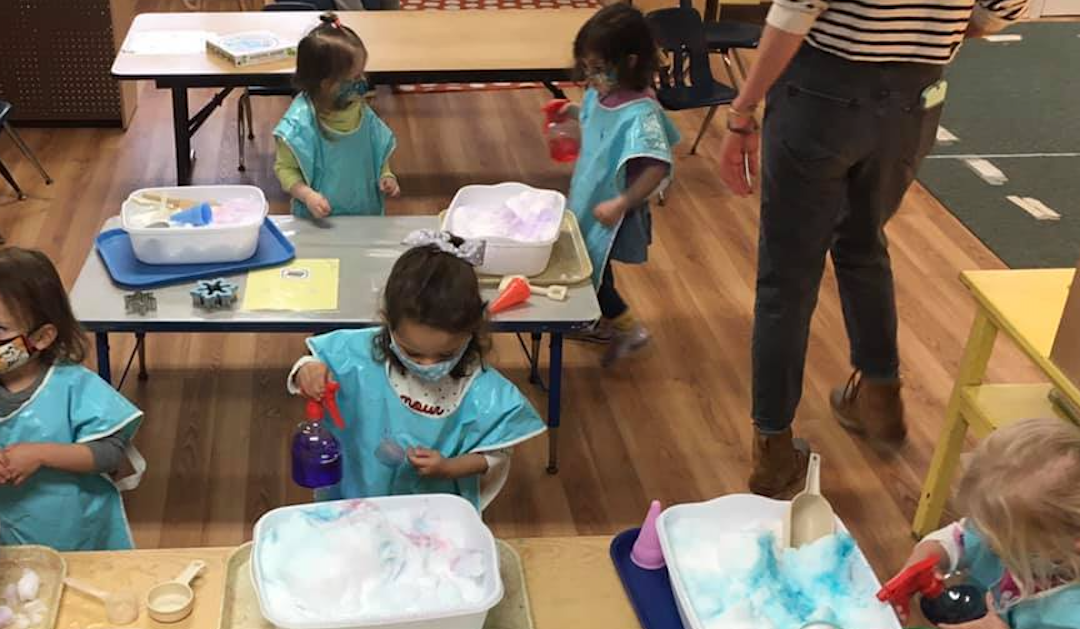When I was a child, one of the best gifts my parents gave me was our open, welcoming dinner table. People from all over the world regularly joined us for meals. Laurent from Cameroon, Guta from Serbia, Eri from Japan, Jane from the Dominican Republic, and countless others ate with us. And while we ate, our guests would often tell us stories about what life was like from their perspective. I didn’t understand its value at the time, but those guests were offering us the chance to try on another person’s glasses. I, too, would like my son, Liam to see how the world must look from other people’s perspectives. I want him to be kind, able to empathize with people who are different from
him. If he can see from a variety of viewpoints, I know he will be better equipped to live in our increasingly globalized world.
And yet, as an adult, I became increasingly aware of how hard it can be to use alternative lenses. If I do not make conscious choices, it is too easy to surround myself mostly with people who look like me, talk like me, have similar amounts of spending money, and even share my politics or my religion. Partly, this is laziness. But if I am honest, I am also afraid. I am afraid that I will offend, or that I will be offended. I am afraid that we won’t have anything to talk about, and the awkward silences will overwhelm us. I am afraid that my things will be too shabby for some, or uncomfortably opulent for others. I am afraid I will be judged; I know I have judged others.
But since Liam was born, I have begun to see things differently. A few months ago, I discovered Liam dancing before Mrs. Ethyl Perry. Her eyes were doing reels and jigs, even though her legs were limp in her wheelchair. Every so often, their eyes would meet, and she would smile, and so would he, and then they would go on dancing together. Then
Mike came over to greet Liam, and they compared hand sizes. Liam’s tiny pale fingers were enveloped by Mike’s large dark hand, and they marveled at the difference together. As Ethyl and I watched Mike and Liam, still hand in hand, I realized how Liam still sees things. It doesn’t matter yet that we are black and white and brown, or Christians and Jews and Muslims, and whatever kind of dancing you do is just fine by him. For Liam, Ethyl and Mike are just people. Our friends.
I know that as Liam grows older he will learn to notice the many things that divide us. Too soon–while he is still in preschool—Liam will begin sorting people into categories the way all of us do. But when that happens, I want to do whatever I can to help him hold onto the lenses that allow him to still see Ethyl and Mike as just people. Our friends.
Ways to help your children respect and appreciate other people’s differences:
- Look at your child’s library with a critical eye—are there plenty of books that depict people from various backgrounds? If not, there are many great choices at the library or bookstore.
- Eat at ethnic restaurants.
- Prepare food the way it’s eaten some place else in the world.
- Shop at an ethnic grocery store. (Try Patel’s—several locations near the 2600 block of Devon for Indian; Broadway Supermarket for Ethiopian injera, or the Rogers Park Fruit Market on Clark for Mexican.)
- Attend one of the many cultural festivals in the area (try Lunar New Year in China Town or on Argyle Street, February 9, 2005; Viva Chicago Latin Music Festival (August 27, 2005; the Celtic Festival in Grant Park; or the Chicago World Music Festival.)
- Visit a place of worship that is different from your own.
- Offer to share holiday traditions with a family of a different faith. (One year, we invited friends to help trim our Christmas tree and they invited us to celebrate one of the nights of Hanukah with them. It was lots of fun!)
- Play at a playground where you expect to find a heterogeneous group of children.
- Welcome your child’s questions and observations about other people’s differences. They are opportunities, not embarrassments. Answer the questions as matter-of-factly as you can. For example, if your preschooler asks why Robin has such dark skin, NAEYC (National Association for the Education of Young Children) recommends that you explain that Robin’s skin is dark because her parent’s skin is that color, too. With slightly older children, it might be appropriated to talk about melanin and skin pigments.
- Invite families from different cultures share your dinner table.
- Make it a point to develop a person friendship for yourself with a person who is culturally and racially different from you.
by Kristin Loeks Jackson


Recent Comments